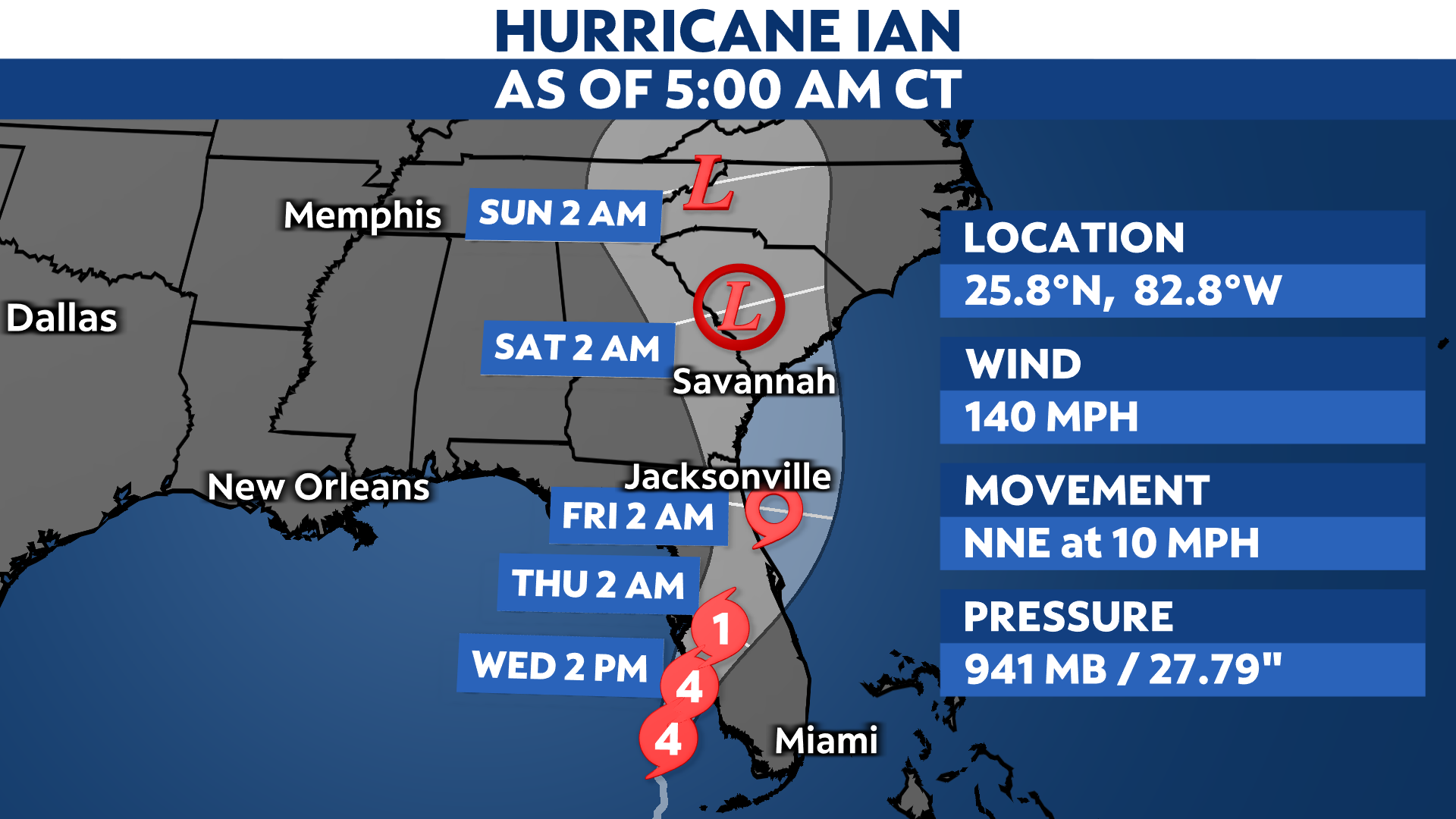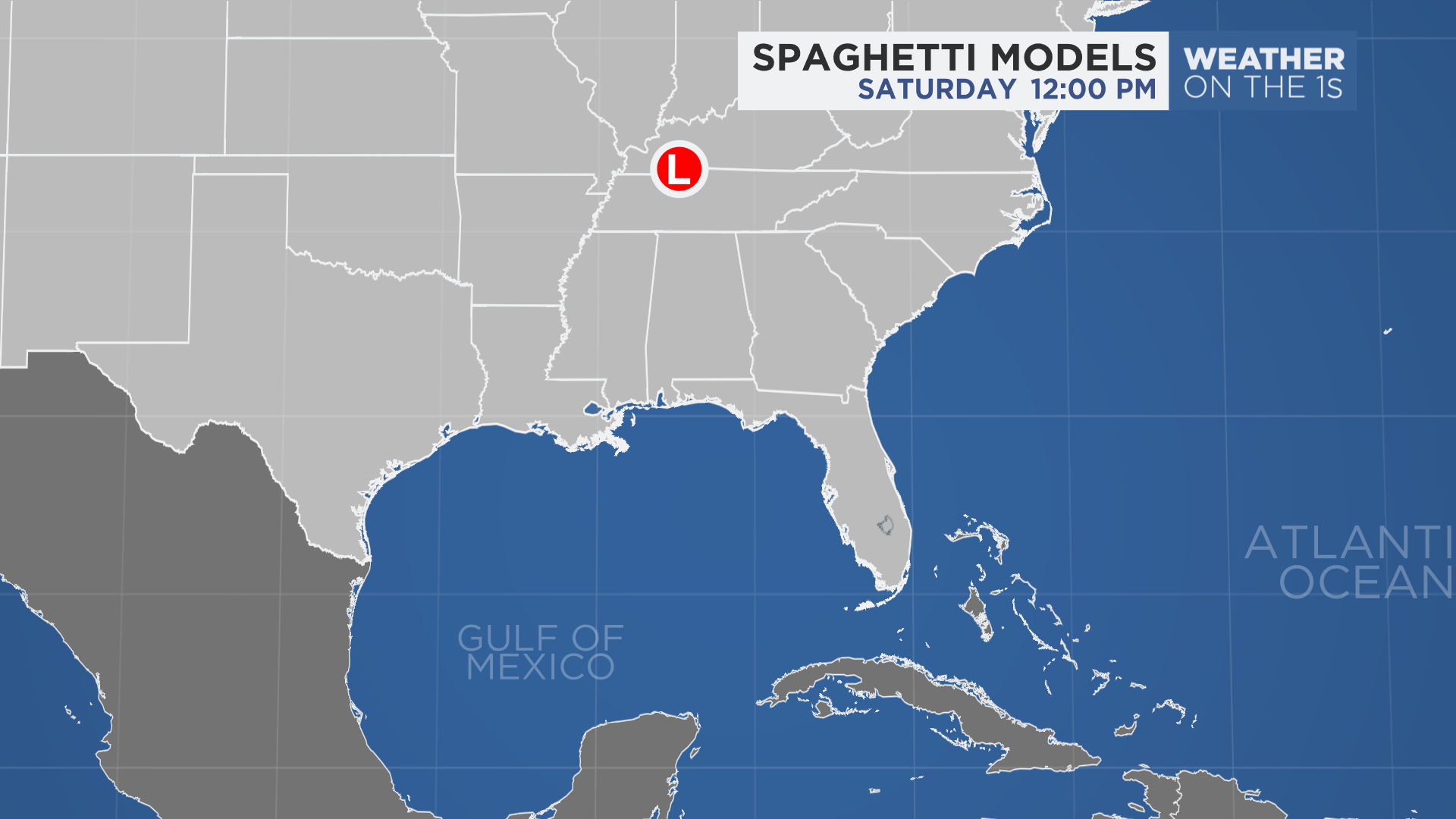Ian became the ninth named storm of the 2022 Atlantic hurricane season on the evening of Sept. 23. Even though it was slow to strengthen, Ian underwent rapid intensification once it become a hurricane on Monday.
Less than 24 hours later, Ian became a major hurricane, just prior to making landfall over western Cuba on Tuesday morning. While it is the fourth hurricane in the Atlantic this year, it will be the first to impact the U.S. mainland.
Even though brief interaction with land slightly weakened it, Ian maintained its major hurricane status as it emerged into the Gulf. After completing an eyewall replacement cycle Tuesday night, Ian is now a Category 4 hurricane right off the southwest coast of Florida.
Ian made landfall as a major hurricane just southwest of La Coloma, a town in the Pinar del Rio Province of Cuba around 4:30 a.m. on Tuesday morning.
Ian weakened slightly after passing over western Cuba, but still maintained its major hurricane status as it moved north into the Gulf. After completing an eyewall replacement cycle Tuesday night, Ian became a Category 4 hurricane early Wednesday morning. Estimated maximum winds are now 140 mph.
Increasing wind shear upon landfall could result is some fluctuations in intensity prior to moving over, but it will remain a major hurricane. Hurricane-force winds are expected to begin in southwest Florida on Wednesday morning.
It will make landfall along the southwest Florida coast on Wednesday, making it the first hurricane to directly hit the mainland U.S. this season.
Along with hurricane-force winds and dangerous storm surge, heavy rainfall could lead to significant flooding around central Florida through the end of the week.
Despite some fluctuations in intensity prior to making landfall, hurricane conditions will begin along the southwest Florida Gulf Coast this morning and spread inland to the rest of the peninsula through Wednesday and Thursday.
Hurricane Warnings remain in effect for a good portion of the Florida Gulf Coast extending inland to parts of Central Florida. Tropical Storm Warnings and Watches are in effect for the rest of the peninsula, the Florida Keys and along the coasts of Georgia and South Carolina.
Other places under Tropical Storm Warnings include western Cuba and parts of the Bahamas.
In addition, storm surge will also be a concern along the southwest Florida Gulf Coast as Ian draws near in the days ahead.
Parts of southwest Florida could be inundated with water levels reaching up to 3 to 6 feet above ground level in some places along the immediate coast.
Given this potential, a Storm Surge Warning remains in effect along most of Florida’s west coast, as well as Florida’s Atlantic coast for the Flagler/Volusia County line to the mouth of the St. Mary’s River, and the St. Johns River.
A Storm Surge Watch is in effect for the Florida Keys, Florida Bay and the mouth of St. Mary’s River to South Santee River.
Along with all the other impacts, strong thunderstorms embedded in Ian’s outer bands could spin up tornadoes. The threat will spread up the peninsula as the hurricane moves north on Wednesday.
Based on the latest data and model consensus, it appears that there is more agreement that Ian’s is going to make landfall in southwest Florida. It has continued to shift south and east since the weekend, pushing the location for landfall farther south of Tampa Bay.
Even though the southern track is good news for Tampa and the west-central Florida coast, impacts can and do occur outside the forecast cone.
Regardless, Floridians and people who live along the Gulf Coast take precautions seriously.
Spaghetti models or plots show a series of individual computer forecast models together on one map. They are useful to give insight into whether multiple models are in agreement on the path of the storm but they do not address the storm’s forecast intensity, winds, flooding and storm surge potential or other data. Tap here for more details on how to best use these models.
Elsewhere in the Atlantic, there is one other disturbance with potential to develop.
See how the 2022 Atlantic hurricane season has gone so far.









